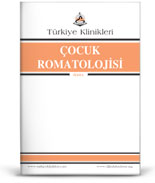Vaskülitler kan damarlarının inflamasyonu, nekrozu ile karekterize, doku ve end organ zedelenmesine sebep olan, kompleks bir hastalık gurubudur. Etiyopatogenez tam bilinmez. Kalıtsal özellikler damar tutulumuna hassasiyeti artırır. Ancak yeterli değildir. Çevresel faktörlerden enfeksiyonlar, en önemli tetiği çeken modülatörlerdir. Bununla birlikte vaskülitler herhangi bir tetikleyici neden olmaksızın da gelişebilir. Vaskülitlerin klasifikasyonu yıllarca tartışma konusu olmuştur. American Collage of Rheumatology (ACR) kriterleri ve Chapel Hill Konsensus Konferans terminolojisi vaskülitlerin çeşitli formlarını ayırt etmede erişkinlerde yaygın olarak kullanılır. Chapel Hill Konsensus Konferans terminolojisi-2012 primer vaskülitleri, damar çapına göre (büyük, orta, küçük ) tanımlar. Keza çocuklarda da bu kriterler kabul görmüş olup, çocuklar için Ankara-2008 kriterleri ile birlikte kullanılır.
Henoch-Schönlein purpura ve Kawasaki hastalığı çocukluk çağının en çok görülen primer vaskülitleri olmasına rağmen diğer primer vaskülitler erişkinlere göre nadirdir. Primer vaskülitler yanında enfeksiyon, ilaç maruziyeti, malignensi ve diğer romatizmal durumlarda da sekonder olarak vaskülitler gelişir. Hastalık sadece deriye veya diğer organlara sınırlı kalabilir veya multisistemik bir tutulum yapar. Hastalık bulguları damar çapına, etkilenen damarların yaygınlığına, altta yatan patolojiye göre değişir. Herhangi bir damarın, herhangi bir organın tutulumu çok geniş spektrumda belirti ve semptomlara sebep olur. Çocuklar hekime; ateş, myalji, artralji, kilo kaybı gibi non spesifik bulgularla ya da hayatı tehdit eden renal yetmezlik, masif hemoptizi ile başvurabilir. Tanı; klinik bulguları destekleyen spesifik laboratuvar ve görüntüleme yöntemleri, histolojik yöntemler ile konur. Tedavi klinik bulgulara ve organ tutulum paternine göre yapılır. Bazı vaskülit tipleri spontan düzelirken, bazen ciddi tiplerinde agresif tedaviler gerekebilir.
Vaskülit tanısını koymak, hekim için güç olabilir. Çünkü hastalığın klinik bulguları birçok enfeksiyöz, neoplastik ve otoimmün hastalıkları taklit eder. Ayrıca vaskülitlerin heterojen yapısı da tanısal bir zorluk yaratır.
Bu kitabın detaylı, güncel bilgiler ile donanmış olarak; konusunda uzman hekimler tarafından yazılma amacı; hekimlerin çocuklardaki tüm vaskülit tiplerinin semptom ve bulgularının karekteristiklerini bilmesi ve diğer hastalıklardan ayırt edebilmesinin ve de doğru tanısal yaklaşım yapma becerisinin desteklenmesidir.
Tüm hekimlerin, pediatrik vaskülitlerin bütün genel özellikleri hakkında daha fazla bilgi sahibi olabilecegi bu kitabın, faydalı ve kullanılabilir olacağını ümit ediyorum.
Bu kitap için zaman ve efor harcayan değerli otörlere içtenlikle teşekkür ederim.
Prof. Dr. Müferet ERGÜVEN
Editör
Vasculitis is a complex group of related disorders characterized by inflammation and necrosis of blood vessels causing to tissue or end organ injury. Etiopathogenesis of vasculitis is unclear. Multiple risk factors are involved in susceptibility to vasculitis. Inherited determinants may increase the risk but are insufficient to introduce the disease. Environmental factors such as infections are important modulators and probably trigger the disease in most cases. However, vasculitis can develop without any triggering cause in many cases.
The classification of vasculitis has been the subject of controversy for many years. The American Collage of Rheumatology (ACR) Clasification Criteria and Chapell Hill Consensus Conference nomenclature are the most widely used to distinguish various forms of vasculitis. The Chapel Hill Consensus Conferans nomenclature-2012 defines primary vasculitis based on vessel size (large,medium,and small). This criteria and Ankara-2008 clasification for children have been widely accepted and used in children with vasculitis. Although primary vasculitis can affect children less compared to adults, HenochSchönlein purpura and Kawasaki disease are the most common primary vasculitis of childhood. In addition to primary vasculitis, vasculitis also develops secondary to infection , malignancy, drug exposure and other rheumatic conditions.
Vasculitis may be limited to skin, other organs or it may cause a multisystemic involvement. Manifestation vary depending on the size, site and extent of affected vessels and underlying pathology. Vessels of any type in any organ can be affected, resulting in a wide spectrum signs and syptoms. Children can present to the physician with nonspesific findings such as fever, myalgia, arthralgia, weight loss, rash or life-threating features such as renal failure,massive hemoptysis. The diagnosis is made by specific laboratory or imaging tests and confirmatory histology that support clinical findings. Treatment is based on clinical findings and organ involvement pattern. While some types of vasculitis recover spontaneously, sometimes agressive treatments may be reguired for severe types.
The diagnosis vasculitis in children may be difficult for the physician, because the clinical findings mimic many infectious, neoplastic and autoimmune diseases. In addition, the heterogenous nature of vasculitis creates a diagnostic challange.
The main purpose of this book, written in detail, with up-to-date information by authors is to support physicians to know the symptoms and signs of all types of vasculitis in children, to distinguish them from other diseases and to make the correct diagnostic approach.
I hope that this book will be especially beneficial and useful to all physicans to know more information about all general features of pediatric vasculitis.
I sincerely thank all our valuable authors who spent time and effort for this book.
Prof. Dr. Müferet ERGÜVEN
Editor







.: Process List